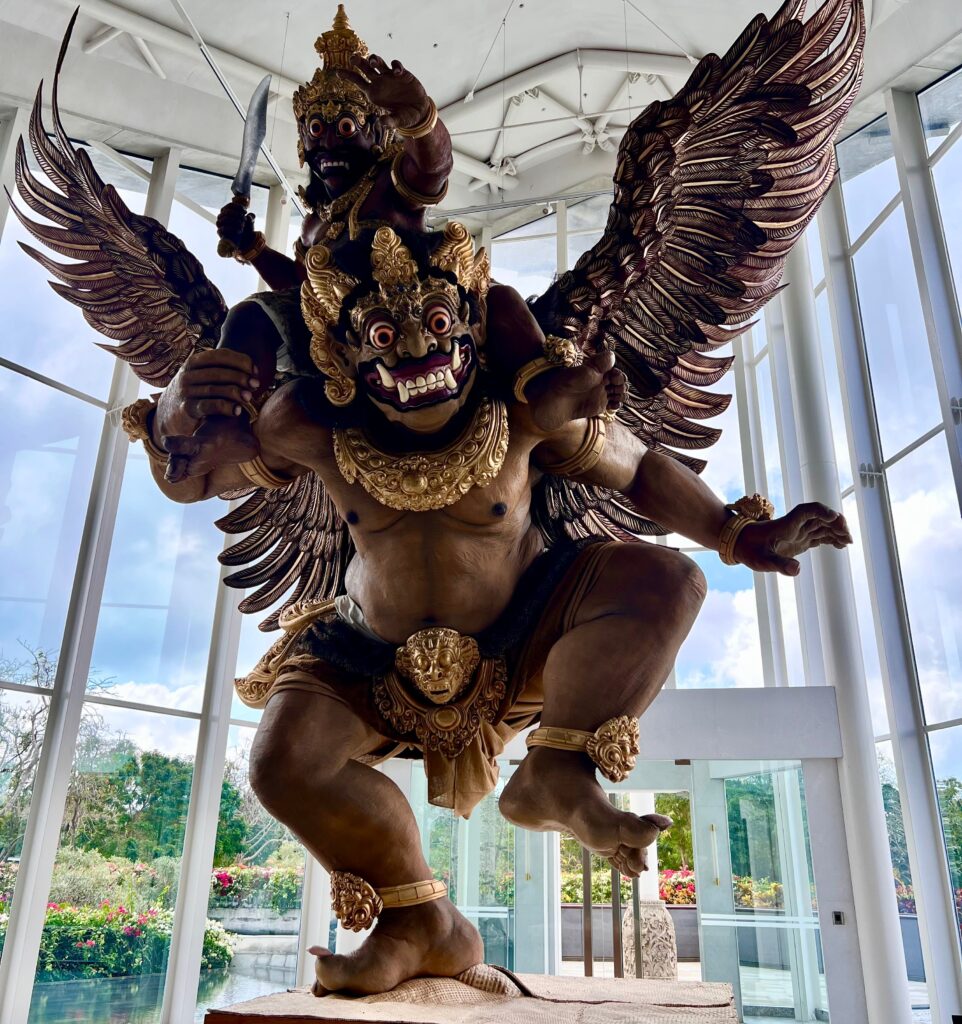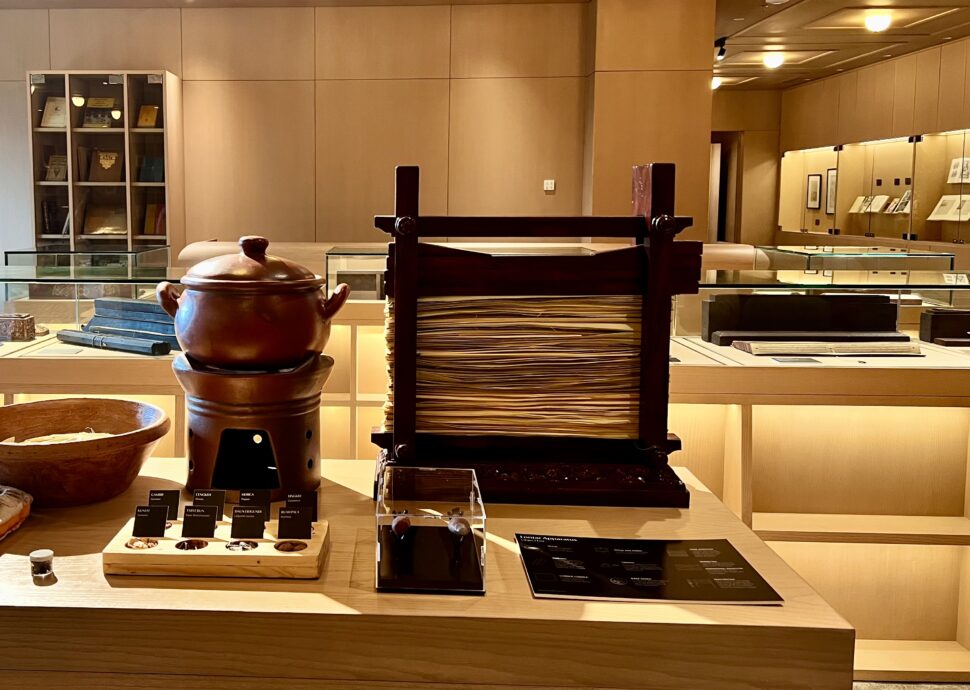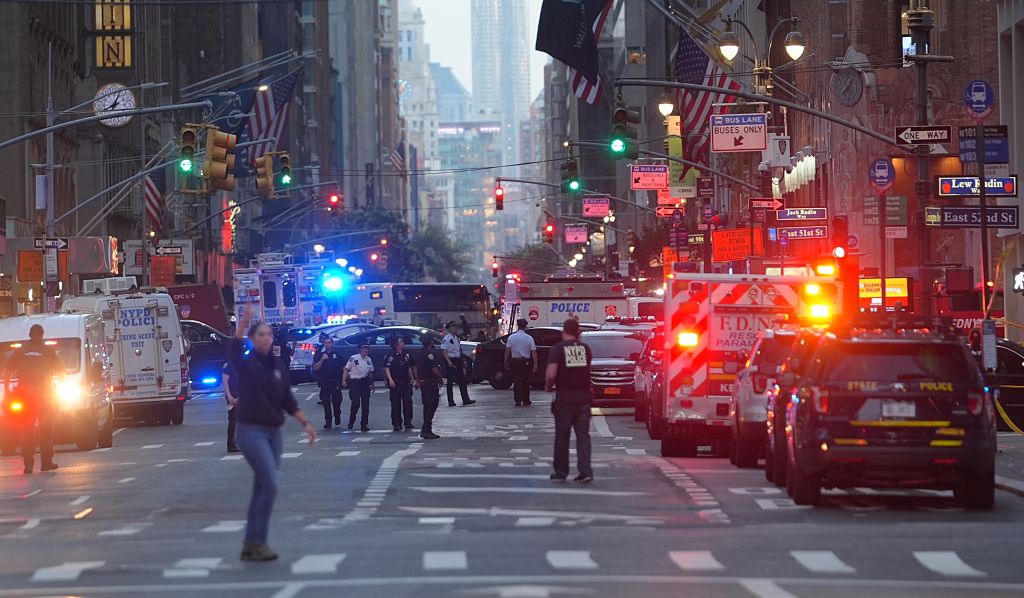I Visited One Of The ‘World’s Greatest Places’ — Here’s What It Meant To Me

When TIME named SAKA Museum at AYANA Estate one of the “World’s Greatest Places of 2024,” I knew I needed to see it for myself. And when I finally did, it was quite a revelation.
Named after the Balinese Saka calendar, the museum stands out immediately. The building’s dramatic shape, modeled after a giant compass needle, is inspired by Pangider Bhuwana, the Balinese concept of the nine directions. That design choice creates a sense of orientation before you even step inside. The museum doesn’t unfold in a straight line. Instead, it guides you with intention, mirroring how balance and direction are understood in Balinese cosmology.
There’s no pressure to take everything in at once. Our visit was led by Nyoman Suarta, SAKA Museum Supervisor, and Marlowe Bandem, the Executive Advisor. With the rhythm and heart of born storytellers, they guided us through rooms filled with myth, memory, and symbolism.
For me, the connection felt immediate. Coming from a background where knowledge is passed down through people and memory rather than archives, I recognized the value of what was being preserved here.
Ogoh-Ogoh And Nyepi As Balinese Rituals Of Reflection, Release, And Reset

One of the most unforgettable moments came when we stood in front of The Fury of Ravana and Wilmana, the tallest ogoh-ogoh in all of Bali. An ogoh-ogoh is a demon-like effigy crafted for the eve of Nyepi, Bali’s annual Day of Silence, and burned in a symbolic purge of evil.
The Fury of Ravana and Wilmana tells the story of King Ravana, the main antagonist in the Hindu epic Ramayana. Known for his strength, intelligence, and devotion to Lord Shiva, Ravana rides a flying chariot called Wilmana, which he uses in battle against Prince Rama. Despite all his power, Ravana is eventually defeated by Rama, who stands for good and righteousness.
The sculpture represents duality: power and fear, order and disorder, the constant tension between what we show and what we suppress. It towered over us, fierce and breathtaking. I found myself staring at it, reflecting on how we carry our own Ravanas: ego, rage, fear, and how necessary it is to ritualize letting them go. Every culture has its own reckoning with the shadow self, but few symbolize it as dramatically or communally as Bali does during Nyepi.
Nyepi, which takes place during the ninth month of the Balinese calendar (Kasanga), is at the heart of the SAKA experience. On this day, the entire island falls silent. There are no lights, cars, flights, or work. Even the internet goes dark. Listening to Bandem explain it reminded me of the power of silence. Nyepi is a full day of silence, with no noise, movement, or distractions. It is about making space to reset and pay attention to what matters.
Writing My Name Into Memory At The Knowledge Center

One of the most unexpectedly moving parts of the visit came at The Knowledge Center, SAKA Museum’s cultural hub and archival center. This space holds curated books, manuscripts, and oral histories. It also includes ancient Lontar manuscripts. These are texts inscribed on dried palm leaves that served as sacred repositories of knowledge. Lontar manuscripts once functioned as everything from spiritual guides to family journals.
Suarta handed me a traditional iron stylus and showed me how to inscribe my name on a dried palm leaf. After I finished, he looked over and said, “Now you’ve written your first ancient book.” It was such a small thing, just my name on a leaf. But it felt like a meaningful connection to a long line of people who had used this same material to record their lives, thoughts, and beliefs. It made everything I’d seen in the museum feel more real.
Bridging Worlds
As I walked through the final rooms of the museum, I kept thinking about the role places like this play in preserving identity, not just for visitors, but for the communities they come from. I grew up hearing stories during everyday moments, around food, at family gatherings, and in passing conversations. I also know how easy it is for those stories to fade, shift, or get lost over time.
SAKA officially opened in 2024, but it feels rooted. It’s almost as if it has always belonged here. It’s proof that preserving culture doesn’t have to be reserved for old institutions or memories that already feel distant. It can happen now, in ways that reflect what people still do, believe, and pass on. The museum gives as much space to the present as it does to the past. Exhibits here share history while also demonstrating how tradition endures, how rituals remain integral to daily life, and how people continue to tell their stories in ways that make sense to them today.
The post I Visited One Of The ‘World’s Greatest Places’ — Here’s What It Meant To Me appeared first on Travel Noire.
What's Your Reaction?
 Like
0
Like
0
 Dislike
0
Dislike
0
 Love
0
Love
0
 Funny
0
Funny
0
 Angry
0
Angry
0
 Sad
0
Sad
0
 Wow
0
Wow
0






























